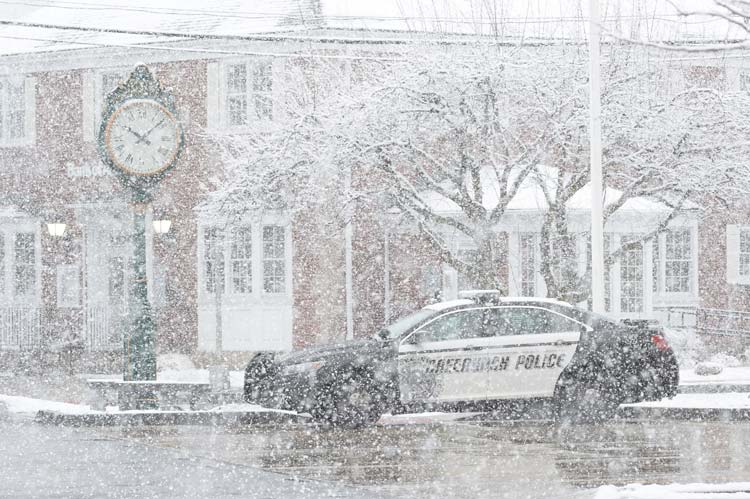By The Rev. Nathan Hart
The world is changing fast. Everything is becoming digitized and individualized. Twenty years ago, when we stood in line for coffee at the local café, we chatted with each other. Now, we barely look up from our phones to notice if anyone else is even there. Some of us wear earbuds so we can listen to what we want—and block out what we don’t. Our iPhones begin with the letter “i” for good reason. Digitization has brought isolation.
Amidst the change, there are some countercultural surprises coming from young people. Some are turning down the volume of digital noise and turning up an analog sound. Here’s an example: my 15-year-old son loves listening to music on vinyl records with me. Even as I type these words we are sitting in the sunroom of our house while an old Pink Floyd album spins on the turntable. The scene is an illustration of the deeper longings of the human heart, longings for authenticity and community.
Albums that were recorded in analog sound best in analog for a reason. A guitar string vibrates to create sound waves much like human vocal cords do. Air moves through a physical object and creates vibrations, or sound waves, that move the physical sensors deep within our ears. The audio remains authentic from the recording studio to home speakers. When we digitize those sounds—converting them into zeros and ones for streaming services like Spotify—we lose the physicality of the recording. We convert the authentic to the manufactured.
For my son, listening to vinyl is something novel, a diametrically different experience than everything else offered to him by the culture around him. He was born in 2008, the same year the iPhone came out. He’s a digital native. But listening to records, he says, “feels authentic.” Plus, we listen to the records together, not alone. (If you come as a dinner guest, we’ll likely invite you into the sunroom to spin some records with us).
My 12yr-old daughter has her own analog tradition: calligraphy. She sits on one of the stools at the kitchen counter, asks Alexa to play her favorite worship music, and pulls out her stash of pencils, paintbrushes, or fine-tip markers. She props up the iPad and does a search for images of hummingbirds or giraffes or wildflowers. After drawing or painting her own version of one of those pictures, she then carefully writes a Bible verse in calligraphy next to or under the image. Like the turntable’s needle on the record in the sunroom, her calligraphy pen gently presses onto the paper to generate vivid beauty. While she creates her masterpieces, she hums along to the music that fills the kitchen air. Often, she plays songs by Christian artist Lauren Daigle, including one with this lyric: “A song of revival, I put it on vinyl. Rise up, rise up.”
I like the sound of that. A song of revival, on vinyl. Can you hear it? The younger generation is playing the undigitized music of the soul. These digital natives (supposedly the “i” generation) are choosing to communicate, surprisingly, in analog.
For example, college students at Asbury University in Kentucky gather for chapel several times a week in an auditorium that looks like it was built around the time vinyl records were the common music delivery medium. It doesn’t look like it’s been updated since that era. Brown seats, wood panels, outdated décor. There are no screens or projectors or electric instruments, and the students aren’t on their iDevices. The music is communal, led by the students themselves on acoustic guitars and piano, and the sound of human voices fills the air.
On February 8, something beautiful happened in that unadorned room. By the end of the normal chapel service, few people wanted to leave. They kept worshiping and worshiping and worshiping. Soon many others joined them and kept praising, singing, repenting, and praying day and night. This lasted nearly two weeks and ended up attracting over 50,000 others who wanted to experience the outpouring of the Holy Spirit on that campus.
It sounds like the youth are telling us something. Call it a backlash against everything digital, everything phony, everything individualized that we’ve thrown at them. They crave authentic, in-the-room, communal experiences. Well, of course they do. During the pandemic, during their formative years, we shut them in their own rooms, put them on laptops, and told them they could Zoom their way through school and life. How awful, how emotionally isolating that digital experience was for so many of them. We replaced the authentic with the manufactured and it crushed their souls.
Life, like music, sounds better in person.
I recently attended a seminar called The Future of Learning wherein experts informed us that future college students won’t need campuses with dorms, quads, and dining halls. They won’t even need classrooms. They’ll be able to learn from the best professors wherever they want through online coursework.
I’m not so sure. My own kids are showing me that things like vinyl records and calligraphy pens offer something that their iDevices can’t.
While digitized learning has some value, I wonder how many young people will yearn to be in person, rubbing shoulders with their peers, tossing a football in the quad, and worshiping in a packed chapel. Analog. Authentic.
In a worship service, one of the most important things we hear besides the proclamation of the gospel is the voices of the people around us when we sing songs and recite prayers. We hear their vocal cords unfiltered and undigitized, analog and authentic, just like God intended.
Our young people already know this. They know the value of it because during the pandemic they experienced the alternative. They’re saying to us, “Never again.” They’re saying to us, “Give us revival.” They’re saying to us, “Let it be analog. Let it be authentic. Let it be real.”
In a digitized and individualized culture, the revival will be real and communal. It will be like a calligrapher’s pen on paper, like a needle on vinyl, like a room full of college students touched by the Holy Spirit. Not high tech, but high touch.
I like the sound of that. “The sound of revival, it’s on vinyl. Rise up, rise up!”
Rev. Dr. Nathan Hart is the Senior Pastor of Stanwich Church.




